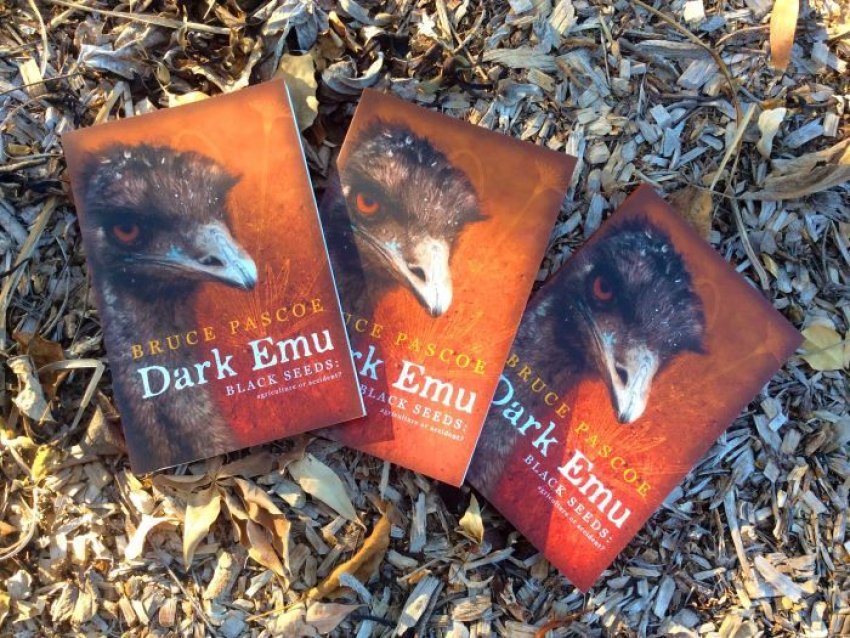
Dark Emu
Bruce Pascoe
Magabala books, 2014
As a kid, the way I was taught about Indigenous people was terrible. For one thing, the understanding of the Indigenous economy and technology was non-existent.
I had this picture of people living in homes basically made of a bit of bark and maybe grass and sticks leaned up against a tree trunk. The impression was they spent their time wandering around and occasionally spearing a kangaroo or goanna for dinner.
Over the years, I picked up bits and pieces of a more realistic and less insulting picture of Indigenous life. Yet it wasn’t really until I read Dark Emu by Bruce Pascoe that it all fell into place and I could imagine in some detail how people lived.
The original inhabitants of Australia built comfortable huts of various materials, including stone in some areas. They farmed grains and root vegetables as staple crops in many areas.
They created dams, weirs and canals to hold and move water. They traded valuable products like axe-heads, smoked eels and possum-skin cloaks. Earth ovens would cook feasts.
What became of all that is almost too sad to think about. I live in rural Victoria, where disease and hunger seem to have wiped out a large part of the Indigenous Victorian population within a few years of the arrival of the sheep-farmers in 1835.
Historian James Boyce suggests most of the surviving Indigenous people of Victoria were living as refugees on the new streets of Melbourne by 1840. But recovering some memory of what was destroyed is positive.
I thought the book is worth comparing with another recent well-publicised book about Indigenous economy and technology: Bill Gammage’s The Greatest Estate on Earth, which I critically reviewed with Emma Murphy in Green Left Weekly #1038.
Pascoe acknowledges Gammage’s work, which undoubtedly gives a lot of credit to Indigenous people for a sophisticated method of managing the land. But how sophisticated?
Perhaps only because Gammage chose fire as his focus, I came away from his book with a kind of impression that he thought it was Indigenous people’s only real tool for land management.
Fire was clearly a tool they used masterfully, flexibly and subtly, but only one tool. Pascoe’s book seems to open up huge new vistas of a more diverse set of tools and methods.
The other, even more striking contrast is the two authors’ attitudes to the relevant bodies of research in the areas they write about. Pascoe communicates much of the latest research (since the 1980s, generally) in archaeology and anthropology with a real enthusiasm and apparent respect for the work.
Gammage, on the other hand, treats ecologists with disdain, preferring the anecdotal accounts of early European explorers as his primary source. He includes as an appendix a sustained polemic against leading ecologists and their views. Perhaps it should not be surprising that the right-wing ideologues of the Institute of Public Affairs were quick to praise his book.
I also thought Gammage was pretty thin on Indigenous voices in his work, and it hasn’t been received with enthusiasm by all Indigenous people. As the critical review I co-authored suggests, I suspect with time Gammage’s thesis will be viewed as a poor piece of historical research and a poor understanding of Indigenous economy.
I have higher hopes for Pascoe’s more modestly presented volume. This book is a fantastic and relatively short read and I commend it to everyone who lives on this continent, in particular those, like me, who aren’t Indigenous.
[A slightly longer version is published at As The River Goes By.]